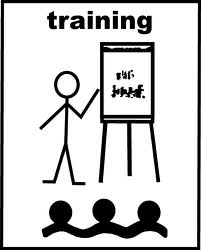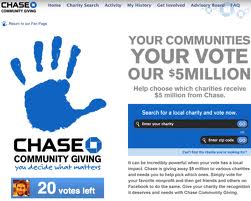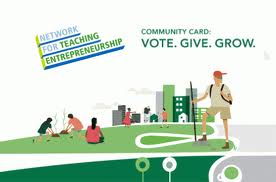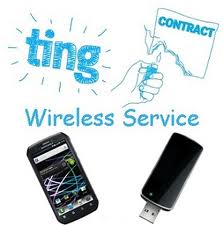 Yesterday’s blog post titled “Are fundraising volunteers born or are they made?” stirred the pot for many of you and begged the question: “How do you go about making an effective fundraising volunteer?” So, I thought answering that question would make for a great follow-up post this morning.
Yesterday’s blog post titled “Are fundraising volunteers born or are they made?” stirred the pot for many of you and begged the question: “How do you go about making an effective fundraising volunteer?” So, I thought answering that question would make for a great follow-up post this morning.
When I consider this question, two really goofy and childish analogies immediately come to mind. The first thought that popped into my head is that of Dr. Frankenstein stitching up his newest fundraising volunteer and pulling the switch while proclaiming “It’s alive!” Ummmm . . . maybe this would be the wrong tone for this subject. LOL
Instead, I decided to pay tribute to my Generation X roots and take a page from an iconic 1970s television show: “The Six Million Dollar Man“. After all, don’t we all wish our fundraising volunteers were worth six million dollars or were capable of raising that sum of money for our agency? LOL
So, let me paint the scene. You and your resource development committee developed a prospect list of volunteers and recruited those individuals to help with your annual campaign. As these individuals stride purposefully through the front door of your agency for their first meeting, you hear those iconic words from the Six Million Dollar Man introduction: “Gentlemen, we can rebuild him. We have the technology. We have the capability to make the world’s first bionic . . . fundraising volunteer.” Or something like that. 😉
So, now what? What does that approach and support look like?
Training
 Formal training is obviously needed, but it must go beyond a simple PowerPoint slide show that illustrates the 12 steps to making an effective face-to-face solicitation. You may want to incorporate some video into this training opportunity. There are many good resources available on the market, and one of those DVD resources is Marc Pitman’s “Ask Without Fear“.
Formal training is obviously needed, but it must go beyond a simple PowerPoint slide show that illustrates the 12 steps to making an effective face-to-face solicitation. You may want to incorporate some video into this training opportunity. There are many good resources available on the market, and one of those DVD resources is Marc Pitman’s “Ask Without Fear“.
However, don’t stop with a PowerPoint slide show and a few video snippets.
I think people learn by doing, which means getting people to practice what they see. Yes, this means motivating people to do something they dislike, which is role-playing things like: 1) making the ask, 2) answering questions and objections, and 3) using the words they’re provided in the case for support document. To make this easier, don’t ask volunteers to do it in front of the large group . . . break them into pairs or groups of three and facilitate small group role-playing.
Support material
You can help improve the effectiveness of your fundraising volunteers by ensuring they have what they need to do a good job:
- solicitation materials
- pledge cards
- donor profile sheet including contact info, giving history, and a specific ask amount for this particular campaign
- letter to leave behind with the solicitation materials that reminds the donor of what they were just asked to donate (Note: this letter might act as a crutch and help the volunteer NOT leave the pledge card behind.)
The more organized and prepared a fundraising volunteers feels, the more confident they will be when it comes time to making the appointment and solicitation.
Support in-person
 I cannot tell you how many fundraising professionals I’ve seen conduct a great training and provide great materials, and then think their job is done. Professional staff are not like orchestra conductors. I personally believe that they are “roll-up-the-sleeves” kind of people who get into the trenches with their fundraising volunteers and participate in solicitation meetings. It is especially critical to go along on solicitation calls with your newest fundraising volunteers. This is an opportunity to model best practices, provide support and encouragement, and coach.
I cannot tell you how many fundraising professionals I’ve seen conduct a great training and provide great materials, and then think their job is done. Professional staff are not like orchestra conductors. I personally believe that they are “roll-up-the-sleeves” kind of people who get into the trenches with their fundraising volunteers and participate in solicitation meetings. It is especially critical to go along on solicitation calls with your newest fundraising volunteers. This is an opportunity to model best practices, provide support and encouragement, and coach.
However, there is a huge challenge that exists with this suggestion. Most volunteer will do everything they can to discourage you from going with them. Why? I suspect that it is because they are afraid. Afraid of what? I think they’re afraid of “doing it wrong” and being told to do it differently.
You can easily overcome this, but it will take perseverance on your part. Don’t take NO for an answer. Additionally, you can reduce their fear by easing into this approach. Perhaps, the first solicitation or two is set-up whereby they are simply sharing their passion for your mission and the information from the case statement with you “making the ask” and “closing the deal”. Then in subsequent solicitation meetings, you transition them more into asking for the contribution, answering questions, and overcoming objections.
Campaign structure
If all you do is provide training, support materials and role-modeling, you will still most likely fail in your quest to “make” an effective (six million dollar man) fundraising volunteer. There are structural things you need to develop and implement that create a sense of urgency, accountability, expectation, mission-focus, etc.
A few such structural tools-resources-approaches include: report meetings, weekly progress reports, written job descriptions, and things that remind volunteers why they’re out asking others for charitable contributions. I won’t go into detail because this topic in and of itself could be a blog post.
Retention
 The biggest and most important thing you need to do is RETAIN your fundraising volunteers and keep them coming back year-after-year. There is nothing worse than investing time and resources into creating the Six Million Dollar Man, and then start over from scratch next year with a completely new set of volunteers. You need to build FUN and recognition into your fundraising activities.
The biggest and most important thing you need to do is RETAIN your fundraising volunteers and keep them coming back year-after-year. There is nothing worse than investing time and resources into creating the Six Million Dollar Man, and then start over from scratch next year with a completely new set of volunteers. You need to build FUN and recognition into your fundraising activities.
Every year that a volunteer keeps coming back and making more asks, the more effective they will become. After all, we’ve all heard the expression: “Practice makes perfect”. Right?
What does your non-profit organization excel at doing to “make” effective fundraising volunteers? Please scroll down and use the comment box to share your favorite training video or best practice. Or share something that you do that you believe makes all the difference in the world. As I always say, we can all learn from each other.
Here’s to your health!
Erik Anderson
Founder & President, The Healthy Non-Profit LLC
www.thehealthynonprofit.com
erik@thehealthynonprofit.com
http://twitter.com/#!/eanderson847
http://www.facebook.com/eanderson847
http://www.linkedin.com/in/erikanderson847



























